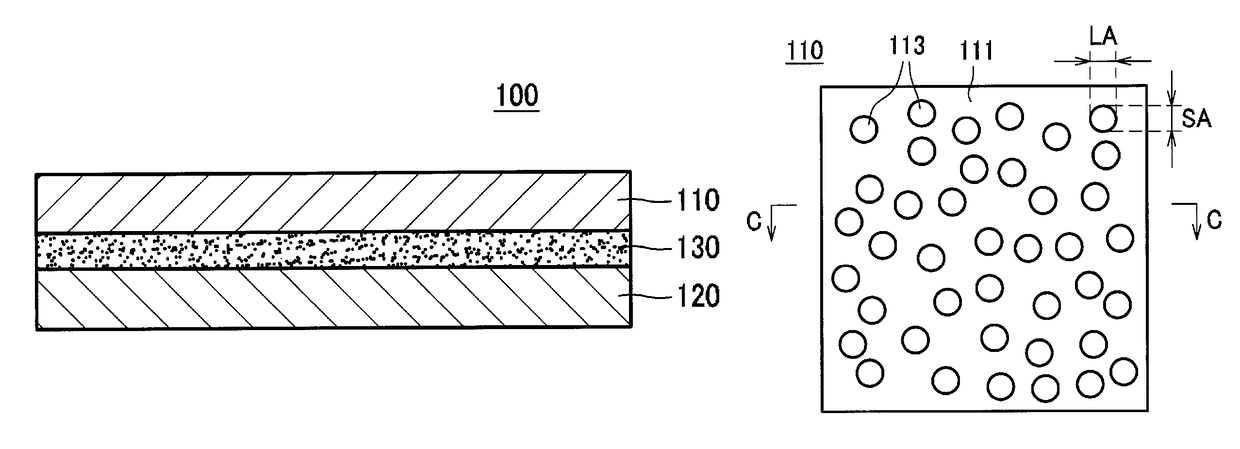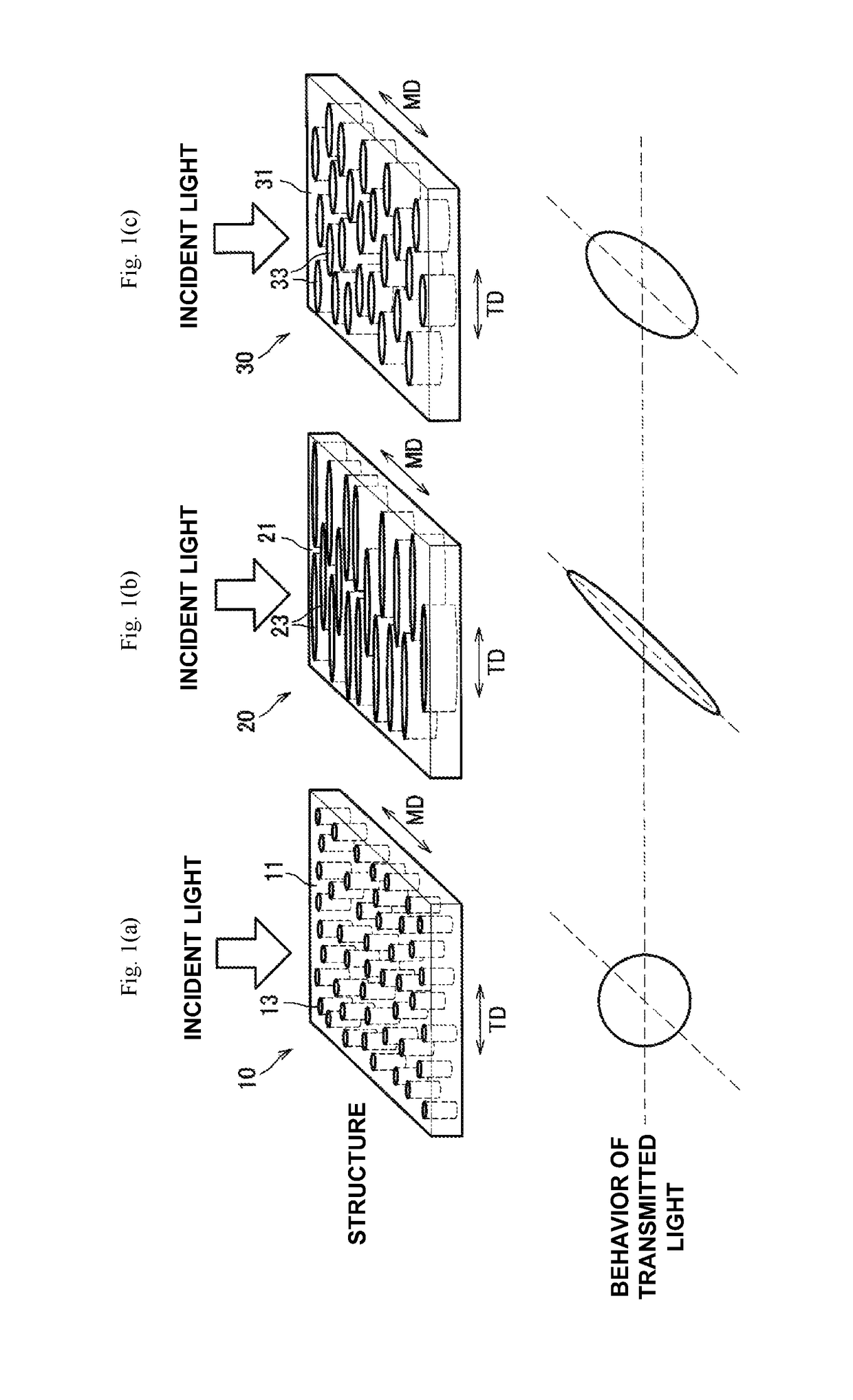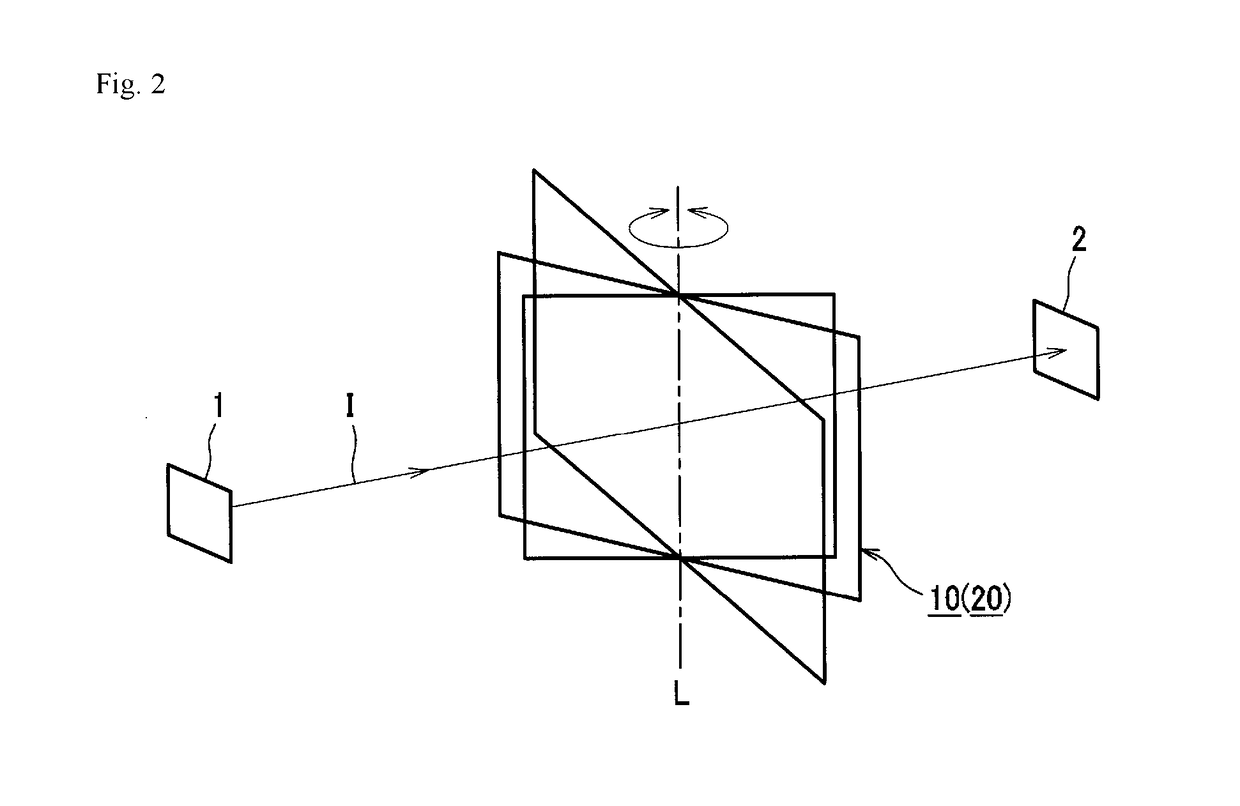Anisotropic optical film
an optical film and anisotropic technology, applied in the direction of diffusing elements, instruments, other domestic objects, etc., can solve the problems of td brightness rapid change and glare generation, and achieve excellent display characteristics, suppress rapid brightness change and glare generation, and high linear transmittance
- Summary
- Abstract
- Description
- Claims
- Application Information
AI Technical Summary
Benefits of technology
Problems solved by technology
Method used
Image
Examples
example 1
[0188]On the entire peripheral edge of a PET film (from Toyobo Co., Ltd., Trade Name: A4300) of 100 μm in thickness, a partition of 0.03 mm in height was formed from a curable resin with the use of a dispenser. This space within the wall was filled with the following photo-curable resin composition, and covered with a PET film.[0189]silicone urethane acrylate (Refractive Index: 1.460, Weight Average Molecular Weight: 5,890) 20 parts by weight (from RAHN, Trade Name: 00-225 / TM18)[0190]Neopentyl Glycol Diacrylate (Refractive Index: 1.450) 30 parts by weight
(from Daicel Cytec, Inc., Trade Name Ebecryl 145)[0191]EO Adduct Diacrylate of Bisphenol A (Refractive Index: 1.536) 15 parts by weight
(from Daicel Cytec, Inc., Trade Name Ebecyl 150)[0192]Phenoxyethylacrylate (Refractive Index: 1.518) 40 parts by weight (from Kyoeisha Chemical Co., Ltd., Trade Name: Light Acrylate PO-A)[0193]2,2-dimethoxy-1,2-diphenylethane-1-on 4 parts by weight
(from BASF, Trade Name: Irgacure 651)
[0194]The liquid...
example 2
[0197]In the same way as in Example 1 except for the use of a directional diffusion element for adapting the aspect ratio of transmitted UV light rays to 8, an anisotropic optical film according to Example 2 was obtained. Tables 1 and 2 show the sizes of the pillar structures for each anisotropic light diffusion layer in the anisotropic optical film, and the evaluation results of an optical characteristics of the anisotropic optical film.
example 3
[0198]In the same way as in Example 1 except for the use of a directional diffusion element for adapting the aspect ratio of transmitted UV light rays to 16, an anisotropic optical film according to Example 3 was obtained. Tables 1 and 2 show the sizes of the pillar structures for each anisotropic light diffusion layer in the anisotropic optical film, and the evaluation results of an optical characteristics of the anisotropic optical film.
PUM
| Property | Measurement | Unit |
|---|---|---|
| diameter | aaaaa | aaaaa |
| diameter | aaaaa | aaaaa |
| diameter | aaaaa | aaaaa |
Abstract
Description
Claims
Application Information
 Login to View More
Login to View More - R&D
- Intellectual Property
- Life Sciences
- Materials
- Tech Scout
- Unparalleled Data Quality
- Higher Quality Content
- 60% Fewer Hallucinations
Browse by: Latest US Patents, China's latest patents, Technical Efficacy Thesaurus, Application Domain, Technology Topic, Popular Technical Reports.
© 2025 PatSnap. All rights reserved.Legal|Privacy policy|Modern Slavery Act Transparency Statement|Sitemap|About US| Contact US: help@patsnap.com



